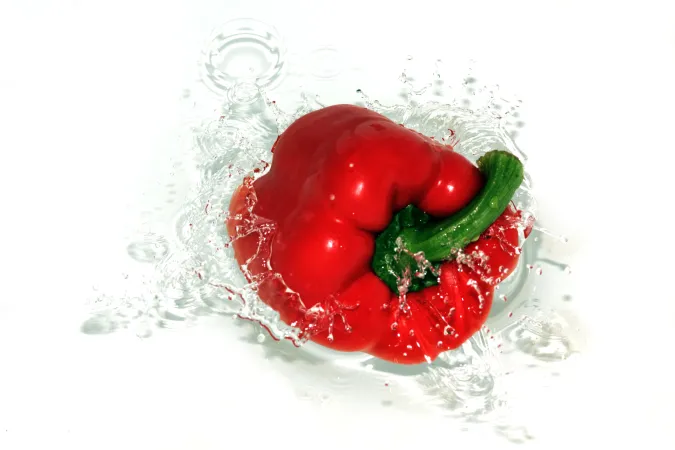Trouver une façon écologique de laver nos aliments
L’industrie canadienne de l’alimentation pourrait bientôt utiliser un nouveau produit pour aider à rehausser la sécurité et la longévité des aliments frais, comme les viandes crues ainsi que les fruits et les légumes précoupés. Regardez cette vidéo du Musée de l'agriculture de l'alimentation du Canada pour découvrir comment l’eau électrolysée est sur le point de devenir une nouvelle façon plus efficace et écologique de nettoyer nos aliments.
Transcription
Thanks to research by Agriculture and Agri-Food Canada, a new disinfectant may soon be used within Canada’s food industry: electrolyzed water.
To create this product, a special reactor is filled with salt water. An electrical charge causes a chemical reaction, resulting in water with a pH of 4, making it more acid. The water now also contains disinfecting molecules of hypochlorous acid, a substance that forms when chlorine bleach is diluted in water.
With these new properties, the water is able to kill a vast range of microorganisms on contact, including germs that lead to food poisoning, and even the viruses that cause HIV and hepatitis. It also eliminates pesticide residues and mycotoxins.
Because electrolyzed water leaves no chemical residue, it can be used on fresh foods, such as baby carrots, without affecting quality.
Last, but not least, it is a very economical disinfectant, because it is produced onsite, on demand. This eliminates the costs associated with bottling and transporting existing cleaning products.
Electrolyzed water can improve the safety and extend the shelf life of fresh pre-cut fruits and vegetables, providing processors with significant savings while helping the food-processing industry become more ecological.
Simple, isn't it?
































































